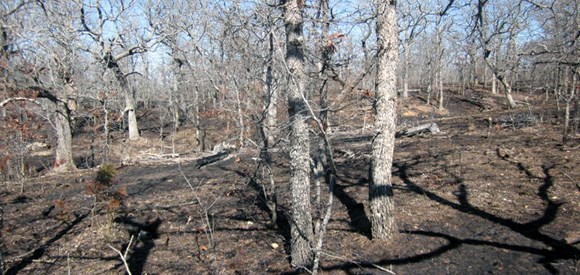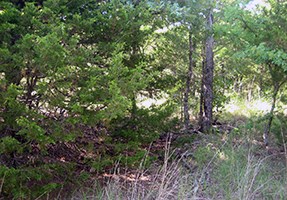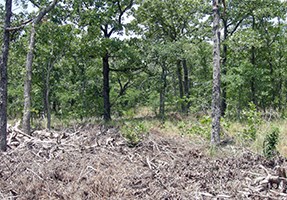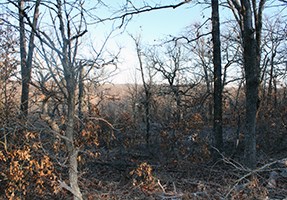Last updated: January 13, 2017
Article
Multiple Benefits of Prescribed Burning at Chickasaw National Recreation Area

In February 2013, Chickasaw National Recreation Area treated approximately 2,380 total acres with a series of prescribed burns in the Five Lakes, Hunting, Point, Golf Course, and South Boundary areas. Added to previous burning conducted over the past few years, the National Park Service has gone a long way in eradicating eastern red cedar slash from nearly 5,000 acres, or approximately one-half of the park’s total area.

Although eastern red cedar is a species native to Oklahoma, it is extremely successful in establishing itself in the absence of fire. The tree species creates a wildfire hazard, takes over native tallgrass prairie, impairs local air quality by producing allergens, and can contribute to the general decline of the local water table. Under natural conditions eastern red cedar is limited by periodic natural fires.

The prescribed fires burned slash from thinned eastern red cedar cut during the summer and fall of 2010 and 2012 as part of a $1.4-million American Recovery and Reinvestment Act (ARRA) project. This eastern red cedar reduction project will open up views around the park, improve wildlife habitat, reduce wildfire hazards, conserve water in the Arbuckle Simpson aquifer, and reduce pollen levels.

The National Park Service's prescribed fire program helps protect local communities by reducing the buildup of flammable vegetation near homes along the park boundary. This will help minimize the intensity and reduce the spread of wildfires in the future. These prescribed burns are also promoting the natural ecosystem's ability to thrive. The areas burned will return to their natural state of mosaic grasses and savanna, with a combination of grassland and woodland in which trees are widely scattered. Native grasses are highly adapted to Oklahoma's climate and can withstand drought and fire. Habitat improvement from the fires will also contribute to increases in species diversity, such as deer and turkey, thereby improve hunting opportunities.
For additional information, maps, and photos, please visit InciWeb.
Contact: Bruce Fields, fire management officer
E-mail: e-mail us
Phone: (806) 865-3360 x426
